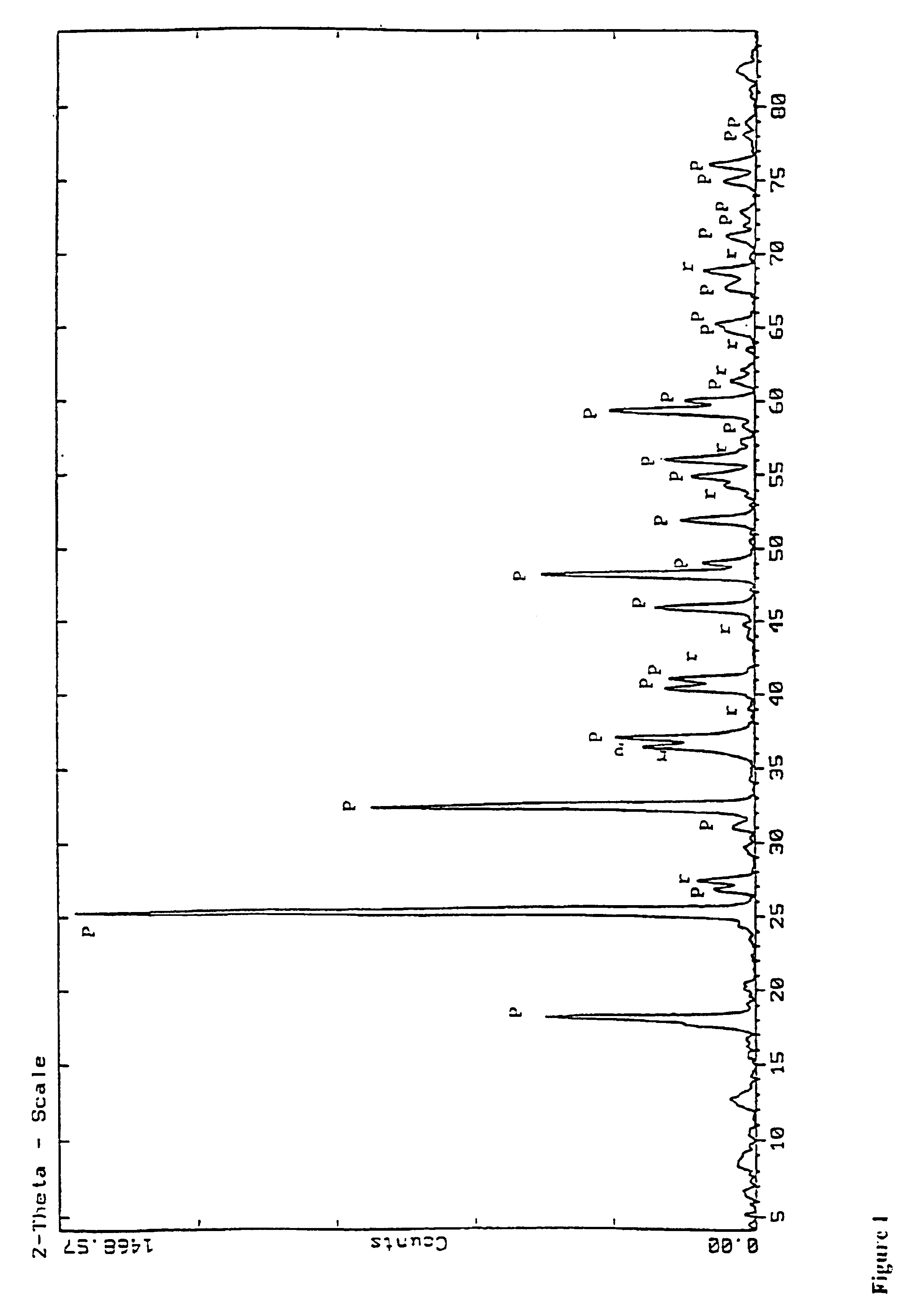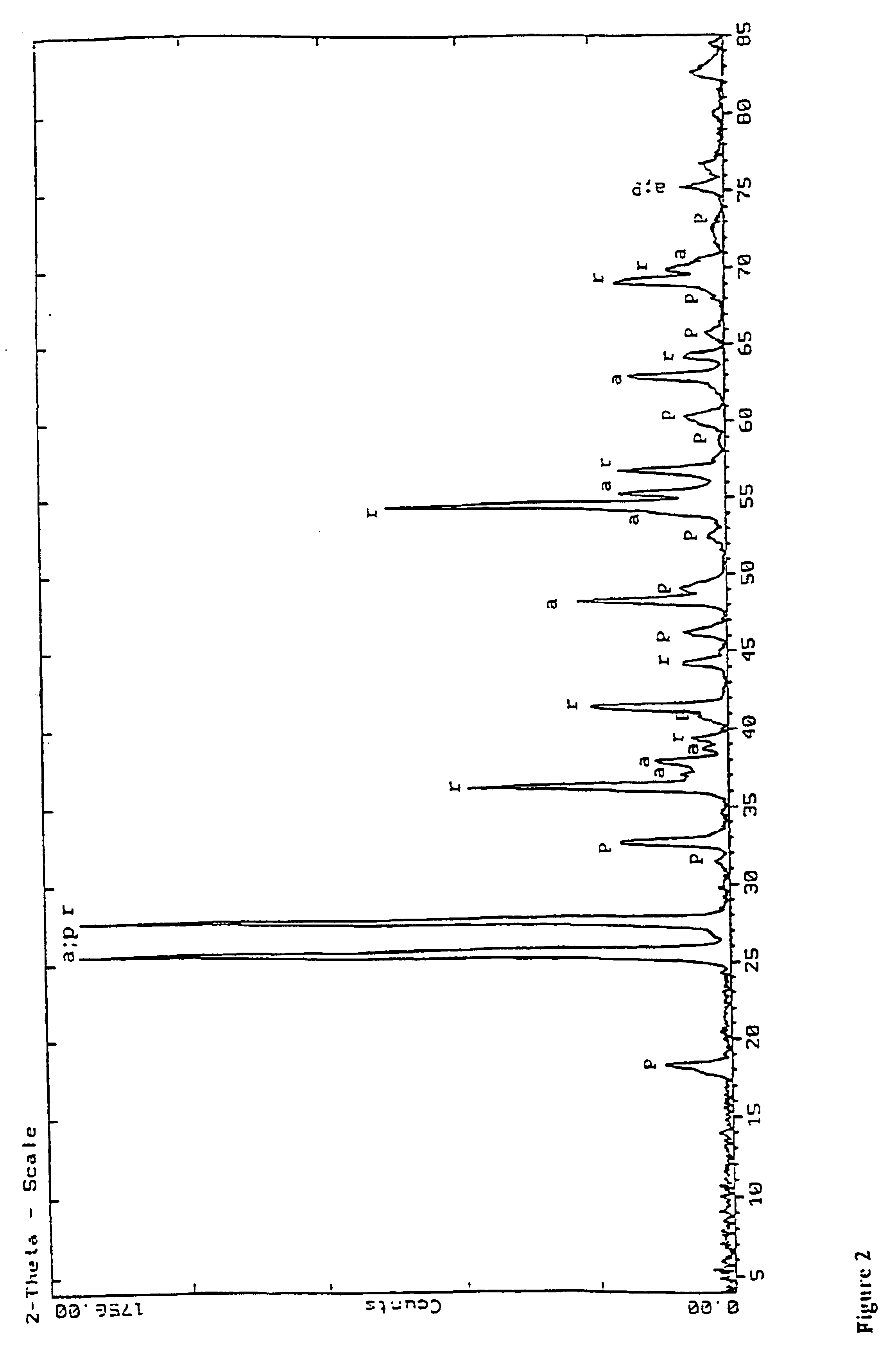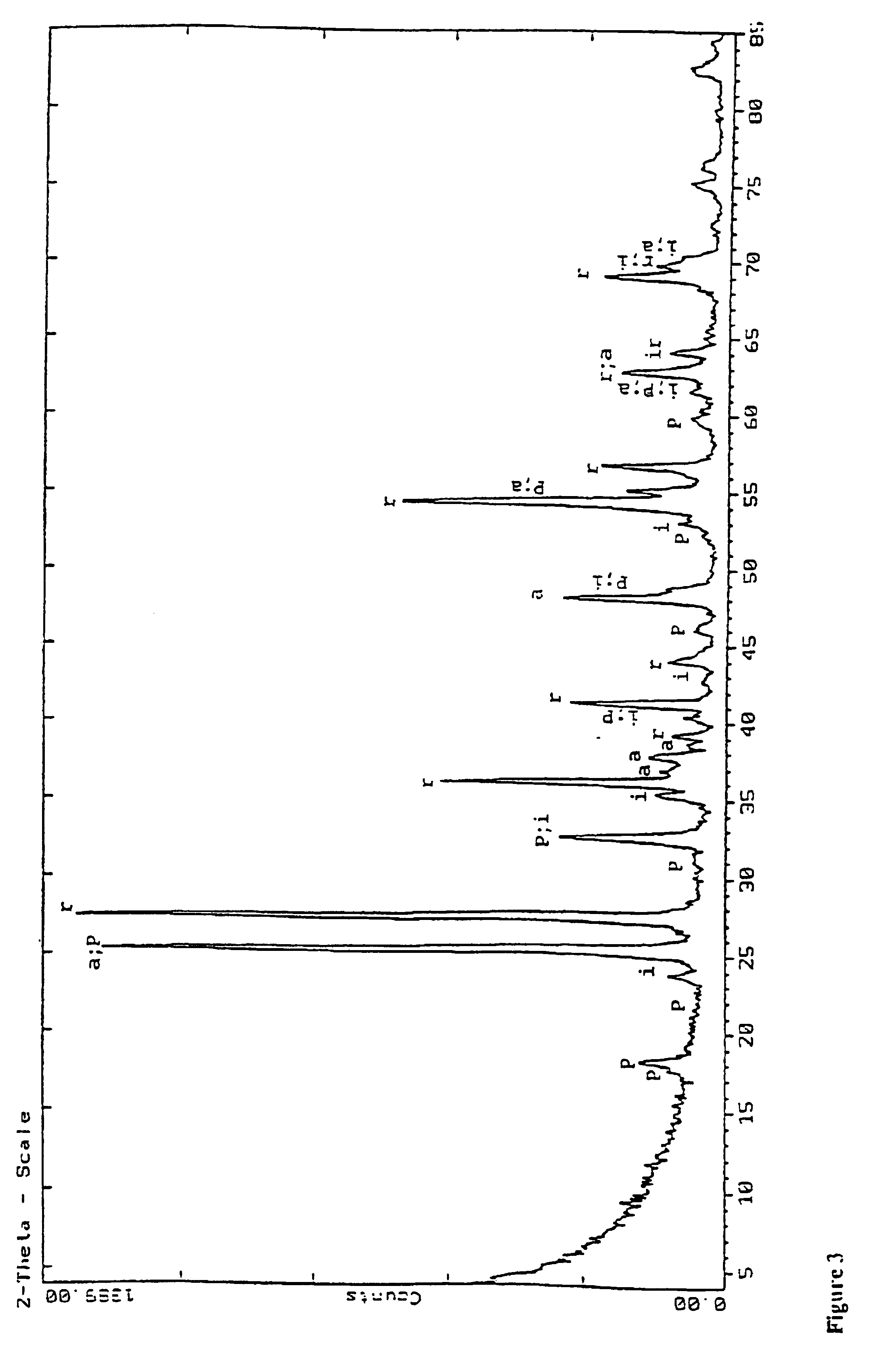Benefication of titania slag by oxidation and reduction treatment
- Summary
- Abstract
- Description
- Claims
- Application Information
AI Technical Summary
Benefits of technology
Problems solved by technology
Method used
Image
Examples
example 1
Ilmenite from a beach sand deposit was subjected to electro-smelting in a direct current (DC) arc plasma furnace. The composition of the slag produced is presented in Table 3.
The slag was broken down by crushing and screened at +106 .mu.m-850 .mu.m. Following this the slag was oxidized in a fluidized bed reactor at 850.degree. C. for 30 minutes in an oxidizing atmosphere comprising a mixture of air and carbon dioxide that set the oxygen level at 8%. Thereafter it was reduced in the same reactor at 850.degree. C. for 20 minutes in a reducing atmoshpere comprising chemically pure carbon monoxide. The roasted slag was then leached in boiling 20% hydrochloric acid at atmospheric pressure for 12 hours. At the conclusion of the leach procedure the leach solution was decanted and the solids were washed and dried at 150.degree. C. The composition of the beneficiated titania slag is given in Table 4.
example 2
The same slag as in Example 1 was broken down by crushing and screened at +106 .mu.m-850 .mu.m. Following this the slag was oxidized in a fluidized bed reactor at 950.degree. C. for 120 minutes in an oxidizing atmosphere comprising a mixture of air and carbon dioxide that set the oxygen level at 8%. Thereafter it was reduced in the same reactor at 950.degree. C. for 20 minutes in a reducing atmosphere comprising chemically pure carbon monoxide. The roasted slag was then leached in boiling 20% hydrochloric acid at atmospheric pressure for 12 hours. At the conclusion of the leach procedure the leach solution was decanted and the solids were washed and dried at 150.degree. C. The composition of the beneficiated titania slag is given in Table 5.
example 3
Ilmenite from a beach sand deposit was smelted in a DC arc plasma furnace. The composition of the slag that was produced is presented in Table 6.
The slag was broken down by crushing and screened at +106 .mu.m-850 .mu.m. Following this the slag was oxidized in a fluidized bed reactor at 850.degree. C. for 120 minutes in an oxidizing atmosphere comprising a mixture of air and carbon dioxide that set the oxygen level at 12%. Thereafter it was reduced in the same reactor at 850.degree. C. for 20 minutes in a reducing atmosphere comprising chemically pure carbon monoxide. The roasted slag was then leached in boiling 20% hydrochloric acid at atmospheric pressure for 12 hours. At the conclusion of the leach procedure the leach solution was decanted and the solids were washed and dried at 150.degree. C. The composition of the beneficiated titania slag is given in Table 7.
PUM
| Property | Measurement | Unit |
|---|---|---|
| Temperature | aaaaa | aaaaa |
| Temperature | aaaaa | aaaaa |
| Temperature | aaaaa | aaaaa |
Abstract
Description
Claims
Application Information
 Login to View More
Login to View More - R&D
- Intellectual Property
- Life Sciences
- Materials
- Tech Scout
- Unparalleled Data Quality
- Higher Quality Content
- 60% Fewer Hallucinations
Browse by: Latest US Patents, China's latest patents, Technical Efficacy Thesaurus, Application Domain, Technology Topic, Popular Technical Reports.
© 2025 PatSnap. All rights reserved.Legal|Privacy policy|Modern Slavery Act Transparency Statement|Sitemap|About US| Contact US: help@patsnap.com



